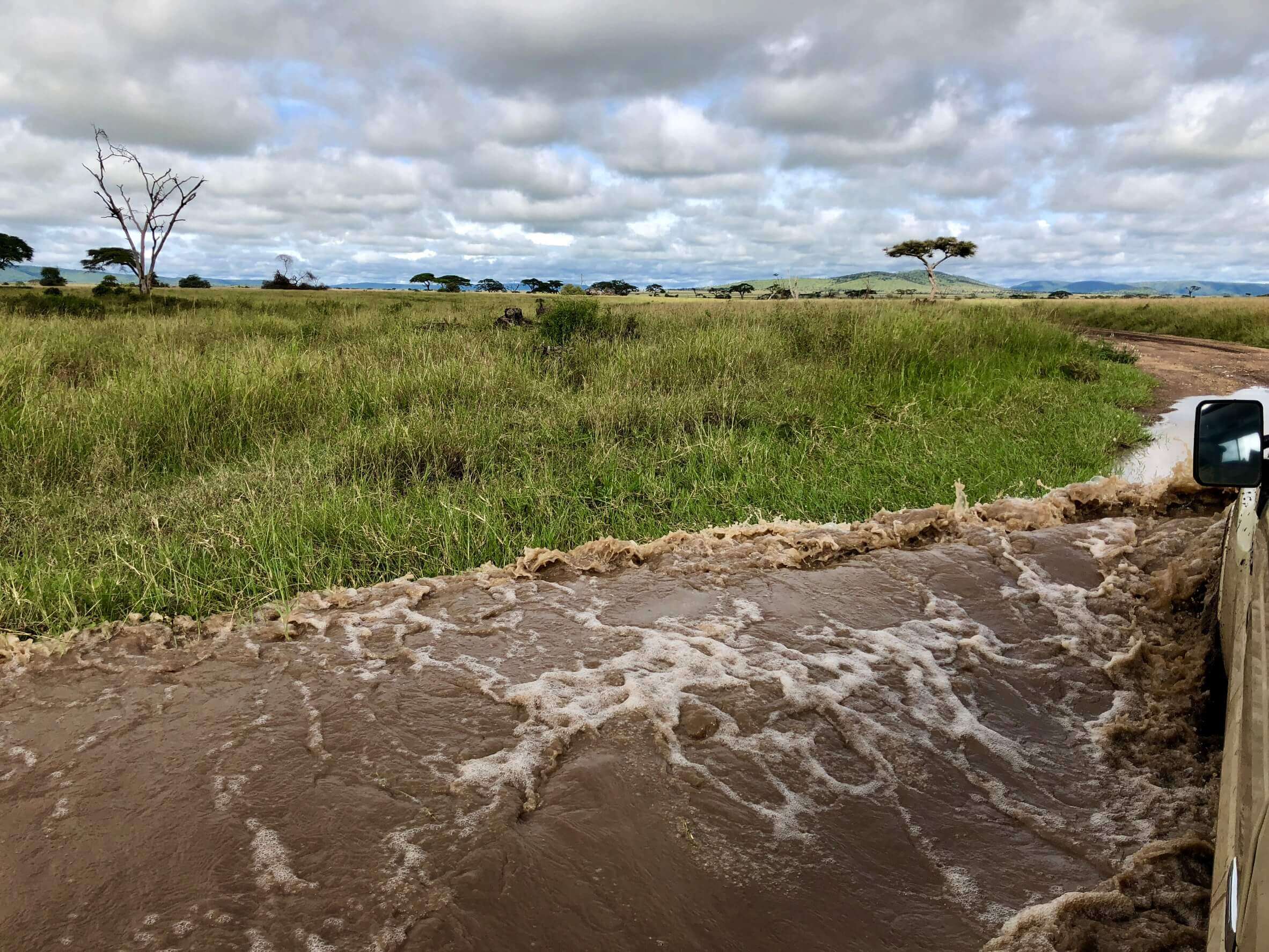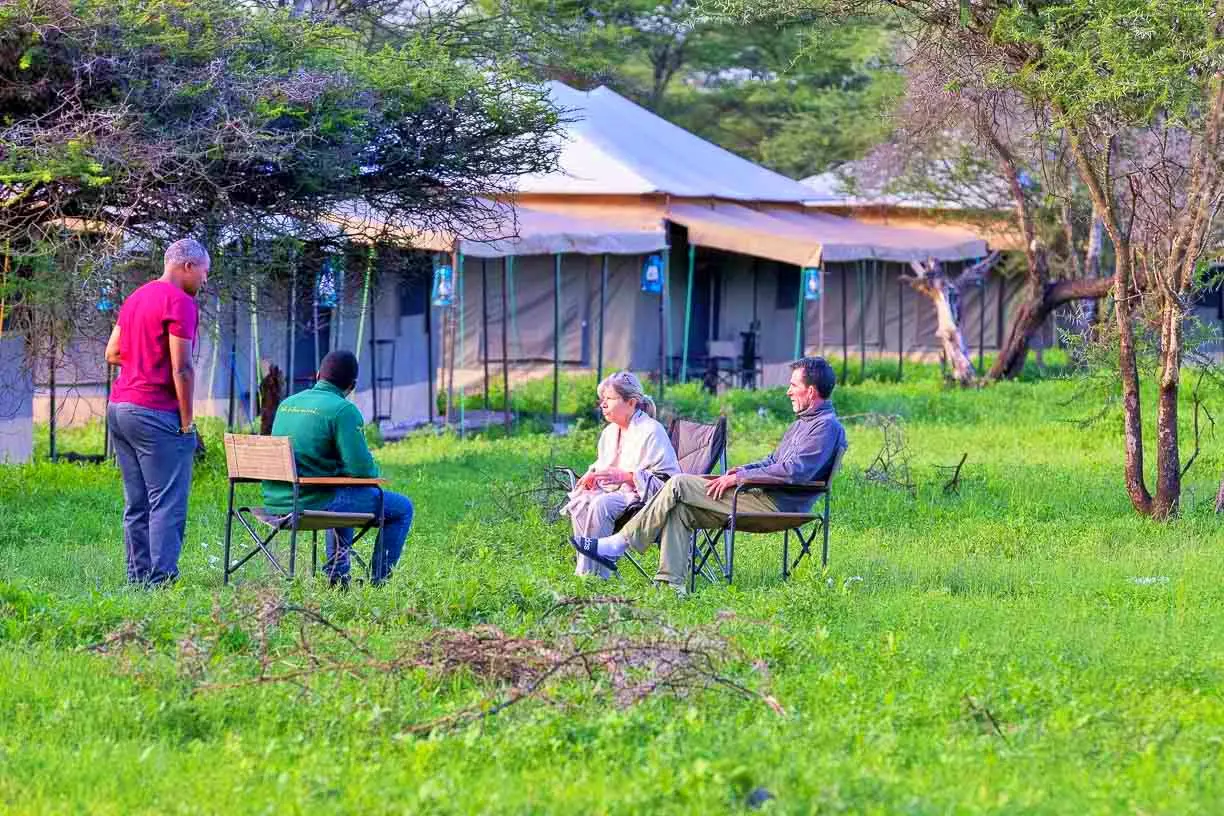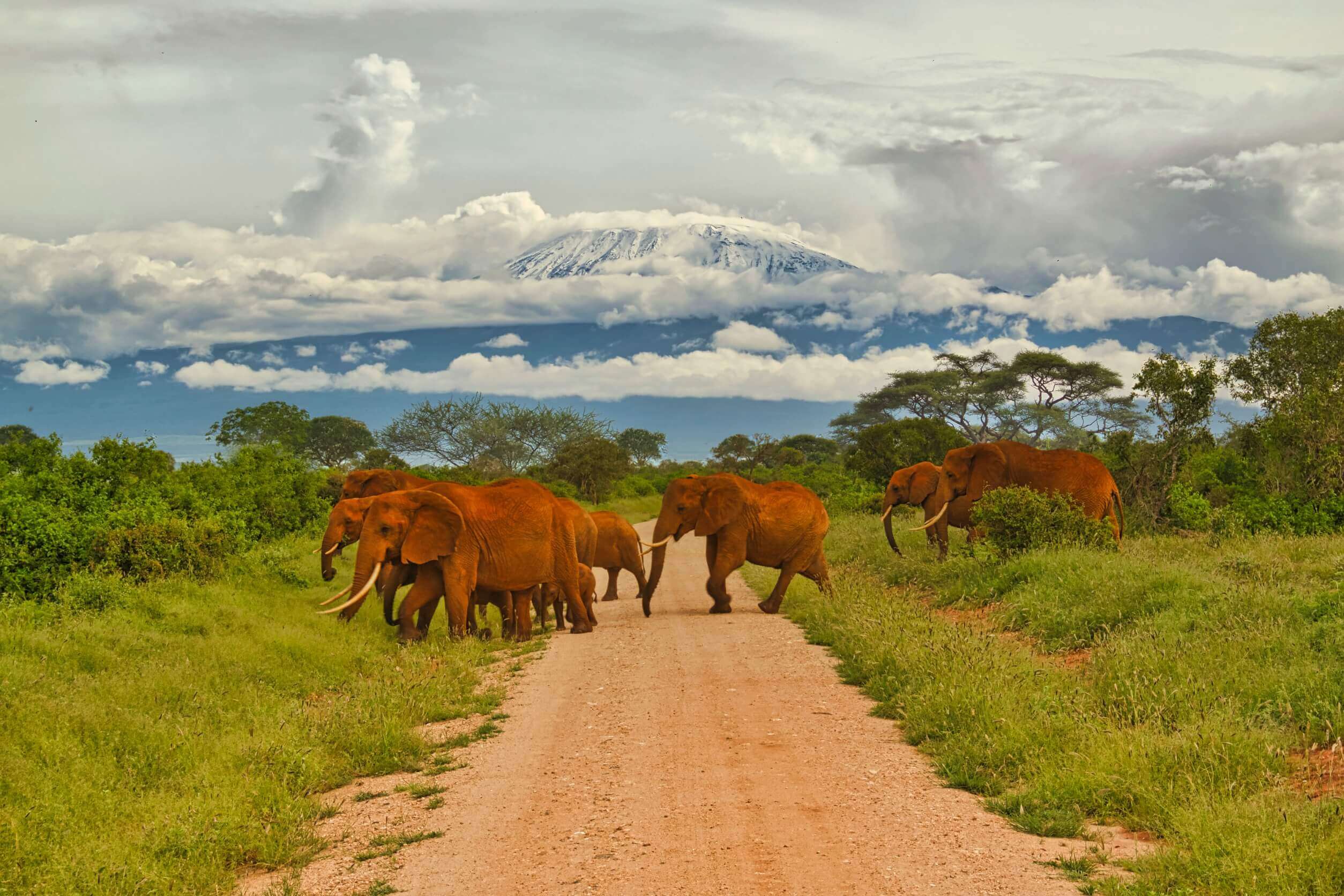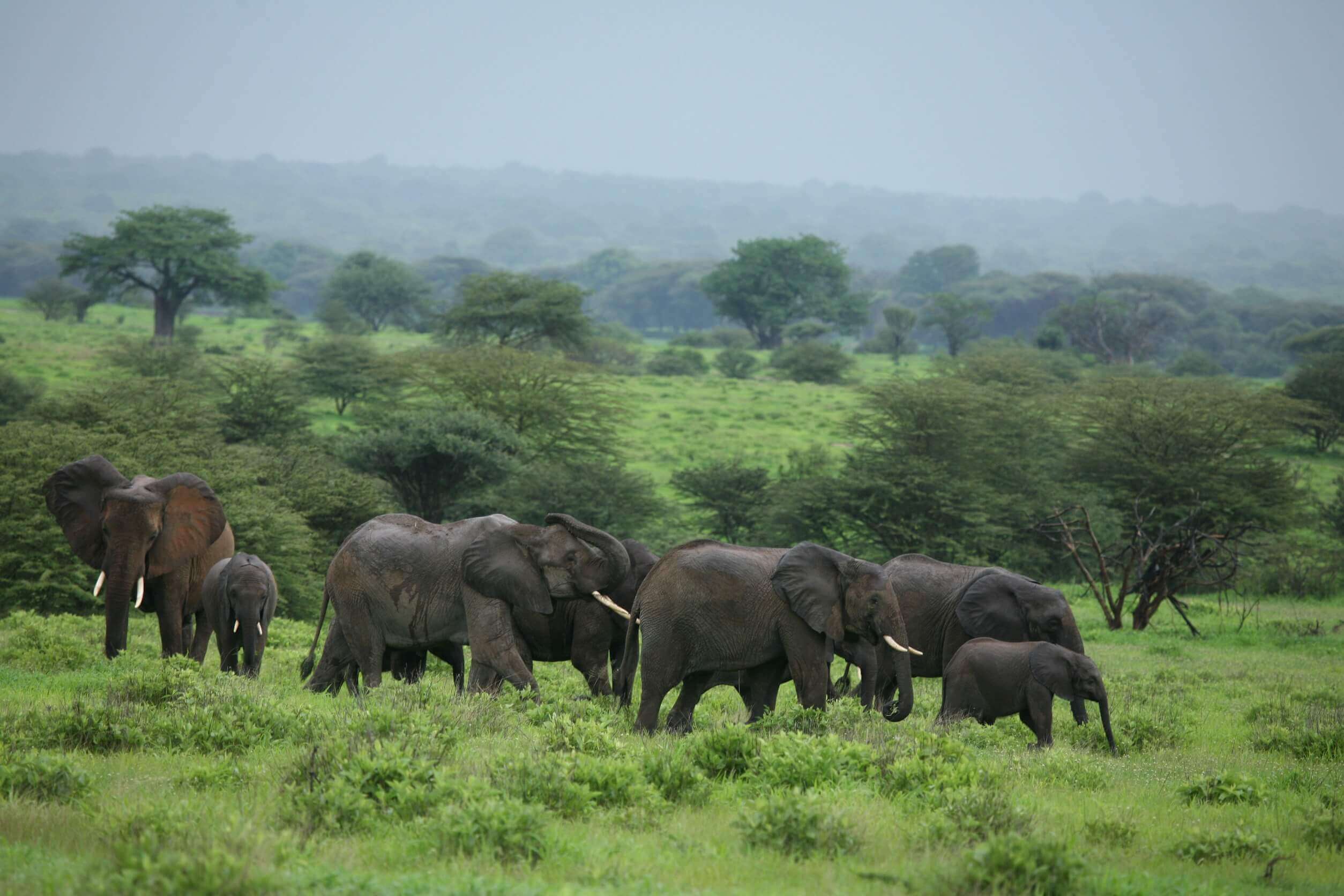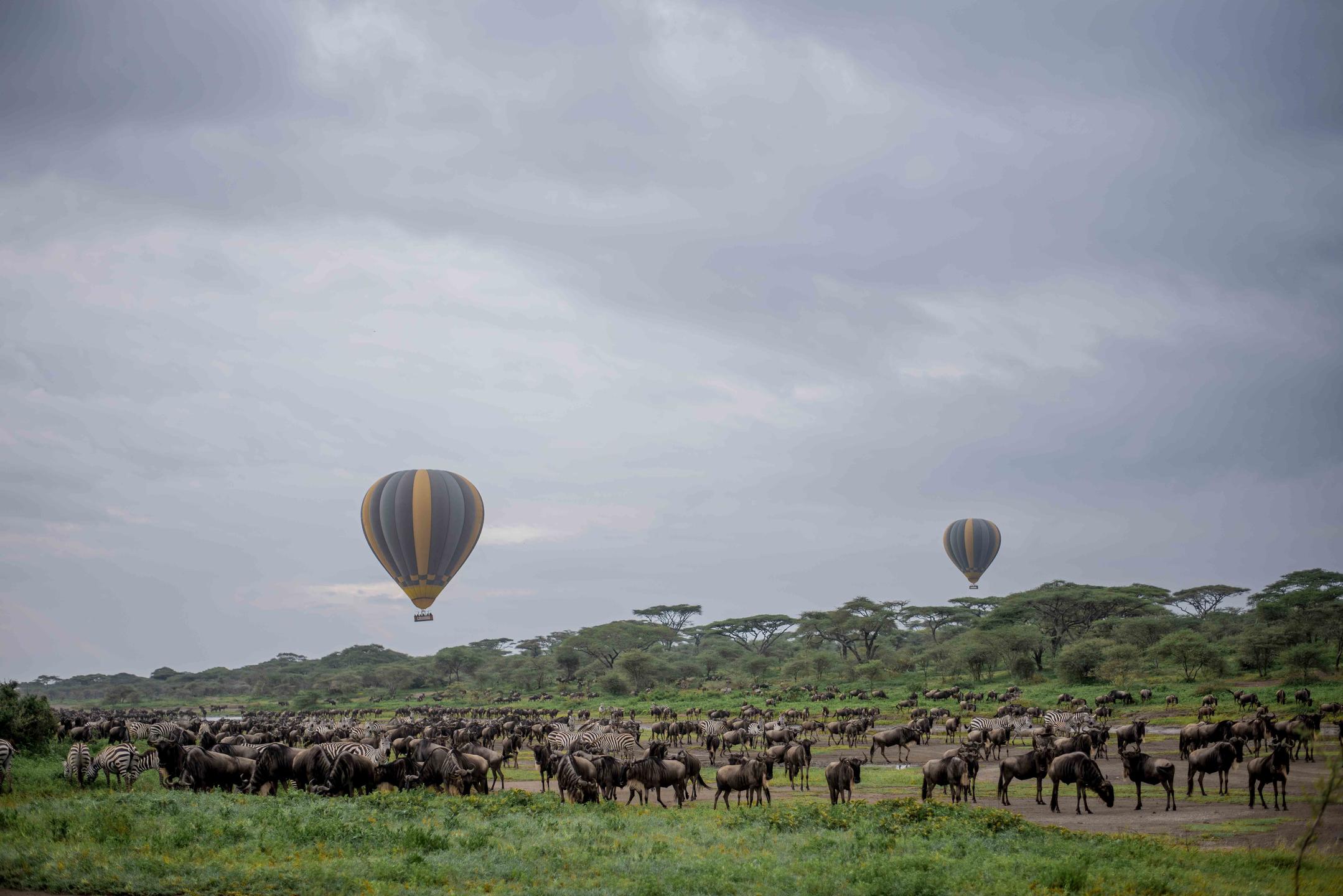Tanzania in January Weather for Safari
Design your trip
Tanzania in January: Weather, Tips, and Best Places to Visit
Are you planning a trip to Tanzania in January and wondering what the weather will be like? Look no further! In this article, we will provide you with all the information you need to know about the weather in Tanzania in January.
January is part of Tanzania’s wet season, which lasts from November to April. During this period, you can expect regular rainfall across the country. However, it’s important to note that Tanzania’s climate varies greatly depending on the region you are in.
In popular tourist destinations like Arusha and the Serengeti National Park, January is characterized by warm and wet weather. Temperatures during this month range from around 20 to 30 degrees Celsius (68 to 86 degrees Fahrenheit), making it one of the warmest months in Tanzania.
The wet season brings about the short rains, which are usually brief showers that occur in the afternoon or evening. While the rainfall may disrupt some outdoor activities, it also brings life to the flora and fauna, making it an ideal time for wildlife enthusiasts. In fact, January is when the Great Wildebeest Migration takes place in the South Serengeti National Park, offering a truly breathtaking experience for visitors.
In general, the wet season in Tanzania is a fantastic time for safari enthusiasts. The chance of rain adds an element of excitement to your adventure, and the landscapes are beautifully transformed by the abundance of water. It’s worth noting that the long rains typically occur from March to May, so if you prefer to avoid heavy rainfall, visiting in January is a wise choice.
In terms of daily weather, January usually offers a mix of sunny days and periodic rainfall. It’s always a good idea to pack a waterproof jacket or raincoat, as well as some light and breathable clothing for those warmer moments.
If you’re planning to visit Tanzania specifically for a safari experience, it’s important to keep in mind that the best times to witness wildlife are from June to October, during the dry season. However, January still offers plenty of opportunities for wildlife sightings, and with fewer crowds compared to the peak season, you can enjoy a more intimate experience.
To summarize, the weather in Tanzania in January is warm and wet, with periodic rainfall throughout the month. The short rains create a vibrant and lush environment, making it an excellent time for wildlife enthusiasts. Whether you’re planning a safari adventure or simply want to explore Tanzania’s natural wonders, January offers a unique and unforgettable experience for visitors.
What is the weather like in Tanzania in January?
In January, the average temperatures in Tanzania vary depending on the region. Coastal areas like Dar es Salaam and Zanzibar experience temperatures ranging from 28°C to 32°C during the day and 23°C to 25°C at night. In the Northern Safari Circuit (Arusha, Serengeti, Ngorongoro), temperatures range from 25°C to 28°C during the day and 13°C to 20°C at night. Southern and Western Tanzania (e.g., Selous, Ruaha) have higher daytime temperatures of 30°C to 35°C and nighttime temperatures of 20°C to 25°C.
The warm climate and green landscapes in January create ideal conditions for wildlife viewing, photography, and outdoor activities like hiking and beach excursions. Packing light, breathable clothing, sunscreen, insect repellent, and a mix of warm layers for cooler mornings and evenings is recommended to stay comfortable and prepared for varying temperatures throughout the day.
Wildlife to Expect in Tanzania During January
Embarking on a January safari in Tanzania promises an abundance of wildlife encounters, marking it as a truly captivating time of the year for nature enthusiasts. As the season of new beginnings, January offers a unique spectacle on the African plains.
Burst of New Life and Predator Action
Baby animals populate the landscapes, presenting heartwarming scenes as they navigate their first days. Among them, the wildebeest take center stage. By mid-January, the southern Serengeti becomes the stage for a breathtaking event—the wildebeest calving season. Thousands give birth each day, and visitors can witness the touching moments as newborns take their first unsteady steps and, remarkably, begin to run shortly after.
The emergence of baby wildebeest isn’t the only highlight. Other species also bring their young into the world, contributing to a feeling of renewal across the region.
Predator Activity
The circle of life is particularly vivid this time of year. The arrival of new prey draws Tanzania’s iconic predators closer. Keep your eyes peeled for lions looking after their cubs or cheetahs seen prowling the open plains. With such a plentiful food supply, January is prime hunting time, and the opportunity to witness a predator in action is within reach.
Ecosystem Richness
The lush vegetation resulting from earlier rains provides an ideal backdrop for these wildlife activities. The verdant growth supports life at every level, ensuring that across Tanzania’s famed national parks, the biodiversity encounters are unmatched.
In summary, January in Tanzania is a celebration of life and survival—a period where the drama of nature unfolds spectacularly before your eyes.
Is january weather in tanzania Good for a Safari?
Tanzania in January Weather is an excellent time for a safari, especially for wildlife enthusiasts looking to witness the Great Wildebeest Migration. The start of the year coincides with the wildebeest calving season in the southern Serengeti, where thousands of wildebeest give birth to calves each day. This natural spectacle attracts predators like lions and cheetahs, providing ample opportunities for thrilling wildlife sightings.
The Southern Circuit of Tanzania, including parks like Ruaha and Nyerere (formerly Selous), offers lush green landscapes and abundant wildlife during January. The reduced tourism at this time allows for more intimate game viewing experiences. In the Western Circuit, destinations like Mahale and Katavi National Parks provide unique safari experiences away from the crowds, making January an ideal month to explore these lesser-known gems.
Tanzania Weather in January: Best Places to Go
- Southern Serengeti (Ndutu Plains): One of the best places to witness the Great Wildebeest Migration and the calving season in January. The vast plains of the southern Serengeti teem with wildebeest, zebras, and predators, offering unparalleled wildlife encounters.
- Ngorongoro Crater: If you’re planning to visit the Ngorongoro Crater, you’ll be pleased to know that the wet season is a great time to do so.The crater is lush and green during this period, creating a stunning backdrop for wildlife viewing. Just be prepared for occasional rainfall, and keep in mind that the roads can become muddy, so it’s advisable to plan your trip accordingly.
Embark on a full-day safari adventure in the breathtaking Ngorongoro Crater. As you drive along the crater rim, you’ll pass through dense forests before making the exhilarating descent down the 600-meter high crater walls. Once on the crater floor, keep your eyes peeled for the renowned residents of Ngorongoro.
This is the only place in Tanzania where you have the chance to spot the illustrious Big Five: lions, elephants, buffalos, leopards, and rhinos. Midway through your safari, enjoy a delightful picnic lunch on the scenic banks of Lake Magadi, a perfect moment to soak in the stunning surroundings before continuing your game drive.
- Arusha National Park: Located near the city of Arusha, this park offers a diverse range of habitats, including montane forests, volcanic craters, and stunning savannas. Explore the park by foot or opt for a thrilling game drive, and encounter a variety of wildlife, including giraffes, elephants, buffalos, and Colobus monkeys.
- Tarangire National Park: Known for its large elephant herds and diverse birdlife, Tarangire National Park is a great destination in January. The lush greenery and plentiful wildlife make it an ideal spot for game drives and birdwatching.
With expert guides and well-planned itineraries, visitors can make the most of their safari experience in Tanzania, exploring a variety of ecosystems, encountering a wide range of wildlife, and creating unforgettable memories in the heart of Africa.
Where is the Great Wildebeest Migration in January?
In January, the Great Wildebeest Migration can be found in the southern Serengeti, particularly in the Ndutu Plains and the Ngorongoro Conservation Area. This region serves as the epicenter of the calving season, where hundreds of thousands of wildebeest gather to give birth to their offspring.
For safari enthusiasts and nature lovers, observing the Great Wildebeest Migration in January is a once-in-a-lifetime experience that showcases the raw beauty and survival instincts of Africa’s wildlife. Whether on a guided game drive, a hot air balloon safari, or a walking tour, travelers can immerse themselves in the sights and sounds of the migration and witness the magic of the natural world unfolding before their eyes.
Why is the calving season so special?
The calving season, a remarkable natural phenomenon that occurs in the southern Serengeti and Ngorongoro Conservation Area from January to February, is a unique spectacle of life, death, and rebirth in the wild. During this period, hundreds of thousands of wildebeest gather in the grasslands to give birth to their calves, transforming the landscape into a nursery of new life.
The rich pastures and mineral-rich soils of the southern Serengeti provide an ideal birthing place for wildebeest, attracting predators like lions, cheetahs, and hyenas who prey on the vulnerable young. The cycle of birth and survival plays out in dramatic fashion as predators stalk the herds, calves take their first wobbly steps, and the circle of life continues amidst the vast African savannah.
Witnessing the calving season in Tanzania is a once-in-a-lifetime experience that offers a glimpse into the intricate balance of nature, the resilience of wildlife, and the raw beauty of the African wilderness. From thrilling predator-prey interactions to heartwarming scenes of maternal care and newborn vitality, the calving season showcases the wonders of the natural world in all its raw and unfiltered glory.
Is January a Good Time to Visit Zanzibar?
Zanzibar, known for its pristine beaches, turquoise waters, and vibrant culture, is a tropical paradise that beckons travelers year-round. In January, the island experiences warm temperatures, balmy evenings, and minimal rainfall, making it an ideal destination for beach lovers and water enthusiasts.
Weather and Seasons
January falls within the short dry season in Tanzania, including Zanzibar, offering travelers a delightful climate with limited rainfall. The island is warmer than during the long dry season, providing perfect conditions for sunbathing and enjoying outdoor activities. This seasonality also means fewer tourists compared to peak months, allowing for a more relaxed and intimate travel experience.
Wildlife and Activities
Zanzibar offers a diverse array of activities for every type of traveler. Whether you’re seeking relaxation on the sandy shores, snorkeling in the coral reefs, or exploring the historic town of Stone Town, the island caters to all interests. Additionally, the mainland’s national parks showcase an abundance of wildlife, with the plains dotted with adorable baby animals and predators lurking nearby, offering thrilling safari experiences.
The vibrant Wanyambo Festival, held in January, celebrates local dance, music, food, and art, showcasing the island’s cultural diversity and traditions. Visitors can immerse themselves in the festivities, interact with local communities, and gain a deeper appreciation for Zanzibar’s unique heritage and hospitality.
Accommodations and Pricing
With luxurious resorts, boutique hotels, and eco-friendly lodges scattered across the island, travelers can choose from a range of accommodations that suit their preferences and budget. Thanks to the shoulder season, visitors can often find better prices on lodging, whether indulging in a beachfront villa, a romantic hideaway, or an eco-conscious retreat.
Zanzibar promises a dreamy getaway in January, where relaxation and adventure blend seamlessly in this island paradise.
Is January a Good Time to Hike Kilimanjaro?
Mount Kilimanjaro, Africa’s highest peak and a renowned trekking destination, attracts adventure seekers and outdoor enthusiasts throughout the year. In January, the mountain experiences clear skies, mild temperatures, and lower precipitation, making it an excellent time to embark on a Kilimanjaro climb.
As one of the warmest months on the mountain, January offers optimal hiking conditions for summiting Kilimanjaro. With fewer crowds compared to peak trekking seasons, climbers can enjoy a more tranquil and immersive experience on the mountain, soaking in the awe-inspiring landscapes and diverse ecosystems along the way.
From the lush rainforests at the base to the alpine deserts near the summit, Kilimanjaro showcases a range of climatic zones, flora, and fauna that make each day of the trek a unique and rewarding adventure. With experienced guides, porters, and support staff to assist climbers, tackling Kilimanjaro in January is a bucket-list experience that promises breathtaking views, personal triumphs, and unforgettable memories.
Costs of Visiting Tanzania in January
When planning a trip to Tanzania in January, it’s essential to consider the costs associated with accommodations, safari experiences, activities, transportation, and meals. While January falls within the peak tourist season in Tanzania, offering favorable weather conditions and abundant wildlife sightings, it also means higher prices for accommodations and safari packages compared to off-peak times.
The cost of visiting Tanzania in January can vary depending on factors such as the level of luxury desired, the duration of the trip, the choice of accommodations, and the activities included in the itinerary. Luxury lodges, tented camps, and all-inclusive resorts offer different levels of comfort, amenities, and services to cater to diverse traveler preferences and budgets.
Safari packages in Tanzania typically include accommodations, meals, guided game drives, park fees, and transportation between destinations. It’s advisable to book safari tours and accommodations in advance to secure availability and take advantage of early booking discounts, special offers, and customized itineraries that meet individual travel preferences and interests.
By planning ahead, researching different options, and working with reputable tour operators and travel agencies, travelers can optimize their budget, maximize their travel experience, and create unforgettable memories in Tanzania in January. Tanzania safari cost: Comparing safaris before you book
Is January a Good Time for Birding in Tanzania?
Absolutely, January is an ideal month for birdwatching in Tanzania. As temperatures drop in the northern hemisphere, a variety of migratory birds make their way to Tanzania, creating a rich and diverse birding experience.
During this time, enthusiasts can look forward to spotting a captivating array of species. Among the notable visitors are:
- European Bee-eater: Known for its vibrant plumage and acrobatic flight patterns.
- White Stork: Majestic and easily recognized by its long legs and beak.
- Barn Swallow: Graceful in flight with a slender body and distinctive forked tail.
- Yellow Wagtail: A small, agile bird with bright yellow coloration.
- Common Sandpiper: Often seen near water, exhibiting distinctive bobbing movements.
- Osprey: A skilled hunter, famous for its dramatic dives to secure fish.
Thus, January’s influx of these migratory birds, combined with the already rich avian diversity in Tanzania, offers birdwatchers an unparalleled opportunity to enjoy a memorable birding adventure.
How Does January Compare to the Long Dry Season for Visiting Tarangire National Park?
For many travelers, Tarangire National Park is synonymous with the vast migratory herds, best seen during the long dry season from June to October. However, visiting in January offers its own unique charm and exciting wildlife encounters.
Wildlife Encounters in January
Despite the common belief that most herds leave during the wetter months, plenty of animals remain in the park, offering robust driving adventures for visitors. While the vegetation is more lush and dense in January, it doesn’t obscure Tarangire’s iconic residents—the magnificent African elephants. Their presence offers stunning viewing opportunities as they roam, feed, and play in their natural habitat.
In addition to elephants, other wildlife such as lionesses have been frequently spotted hunting, making a safari in January an exhilarating experience. The increase in greenery means that some smaller animals might be a bit more challenging to spot, but the landscape itself transforms into a vibrant, lush panorama.
Vibrant Scenery and Unique Experiences
Visiting Tarangire in January also means enjoying the park against a backdrop of rich, green foliage. The landscape is alive and the air is filled with the songs of various bird species, making it a paradise for birdwatchers. The rains replenish the park’s water sources, creating a supporting environment for both resident wildlife and migratory birds.
A Different Kind of Adventure
Ultimately, January provides a different kind of adventure compared to the crowded long dry season. While you might miss the spectacle of the larger migratory herds, you will gain a more intimate and serene experience with the park’s full-time residents and a vibrant wilderness alive with seasonal color and activity.
What to wear in Tanzania in January
When traveling to Tanzania in January, it’s important to pack appropriate clothing and gear to ensure comfort, protection, and enjoyment during your safari adventure. Here are some clothing and accessory recommendations for a trip to Tanzania in January:
- Lightweight, breathable clothing: Pack clothing made from moisture-wicking fabrics that provide ventilation, sun protection, and quick drying properties. Opt for long-sleeved shirts, trousers, and skirts to shield against the sun and mosquitoes.
- Warm layers: Bring a fleece jacket, sweater, or lightweight down jacket for cooler mornings and evenings, especially in high-altitude areas like Ngorongoro Crater. Layering allows you to adjust to changing temperatures throughout the day.
- Comfortable walking shoes: Pack sturdy, comfortable footwear for walking safaris, game drives, and hiking excursions. Closed-toe shoes with good grip and support are ideal for outdoor activities and exploring diverse terrains.
- Sun protection: Bring a wide-brimmed hat, sunglasses, sunscreen, and lip balm with SPF to shield against the strong African sun. Reapply sunscreen regularly, especially during outdoor activities and while on safari.
- Insect repellent: Mosquitoes are prevalent in Tanzania, particularly in the evenings and early mornings. Use insect repellent with DEET or natural alternatives to protect against mosquito bites and insect-borne diseases.
- Swimsuit: If your itinerary includes beach excursions or visits to lodges with swimming pools, pack a swimsuit for relaxing and enjoying water activities in tropical settings.
- Camera gear: Capture the stunning landscapes, wildlife sightings, and cultural moments with a camera, binoculars, and memory cards. Be prepared for photography opportunities during safaris, nature walks, and scenic viewpoints. What to Wear on Safari in Tanzania
Tanzania in January offers a perfect blend of warm weather, abundant wildlife, and exciting safari opportunities for travelers seeking adventure and exploration in the heart of Africa. From witnessing the Great Wildebeest Migration to relaxing on the pristine beaches of Zanzibar.
By packing smart and planning ahead, travelers can prepare for a comfortable and enjoyable safari experience in Tanzania in January, taking in the beauty of the landscapes, wildlife encounters, and cultural highlights with ease and style.

